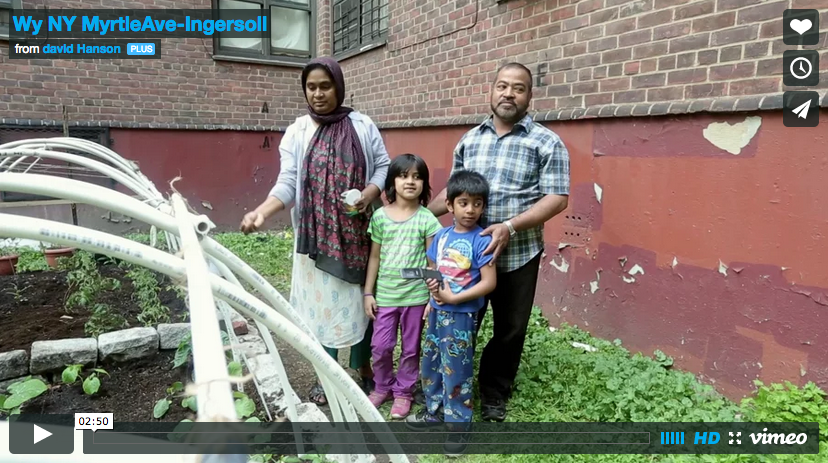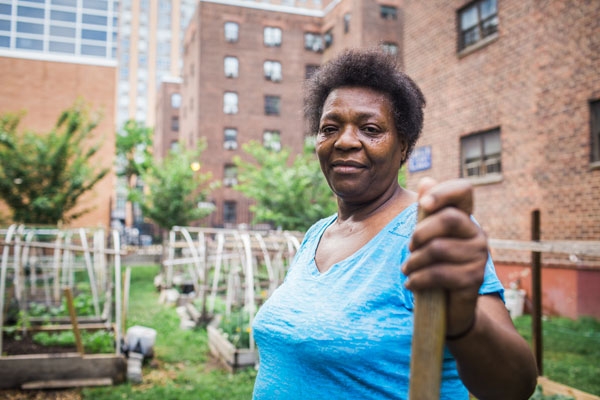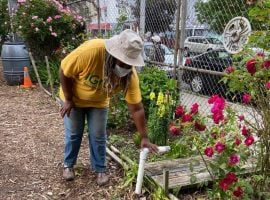This spotlight is a feature in a series of the USDA Community Food Project Competitive Grant Program (CFP). Grantees are doing some of the most innovative and collaborative projects to change local and regional food systems. WhyHunger’s www. — also funded by a CFP grant — is profiling these organizations through dynamic stories and pictures, to give a real flavor of what the projects look like and how they’re accomplishing their goals. Up today: Ingersoll Gardens and the Myrtle Avenue Revitalization Project in Brooklyn, NY. Story, pictures and video by David Hanson.
 A half-century of the American urban narrative has unfolded in the Brooklyn neighborhood below Edna Grant’s apartment. She moved into Ingersoll Houses 55 years ago so through her window she’s seen the tale of post World War boom, then the manufacturing collapse of the 70s, a few decades of unemployment and crime, then the revitalization, and now the gentrification. But Ms. Grant’s house always stayed clean.
A half-century of the American urban narrative has unfolded in the Brooklyn neighborhood below Edna Grant’s apartment. She moved into Ingersoll Houses 55 years ago so through her window she’s seen the tale of post World War boom, then the manufacturing collapse of the 70s, a few decades of unemployment and crime, then the revitalization, and now the gentrification. But Ms. Grant’s house always stayed clean.
“I’m a captain of this building,” she says. “Me and the co-captain keep it clean and we don’t let people hang out in the hallways.”
Ms. Grant had a career as a book binder. Books for courts, schools, libraries, even cruise ships. She has an easy laugh and a playfully self-deprecating sense of humor. She uses a walker to get around and needs to sit and rest after a while. Ms. Grant raised five kids, four of them adopted from her daughter after she passed away. The train used to run from across the street to the rest of the city. Ms. Grant has been planted here in this corner of Brooklyn, a witness, participant, and place-maker of her community. It’s no surprise that the community food movement of the 2000s found her, like someone seeking shade might spot a sprawling, welcoming tree.
The Ingersoll Houses went up in 1944 during the war-time boom days. The Brooklyn Navy Yard had attracted a skilled-labor population to the area with over 70,000 jobs. Ingersoll and nearby Walt Whitman apartment complexes housed many Yard sailors and employees. Encouraged by Walt Whitman, Brooklyn built its first park, designed by Frederick Law Olmsted and Calvert Vaux. Now Brooklyn’s iconic Fort Greene Park ends across Myrtle Avenue from Ingersoll Houses.
A decade after Ms. Grant moved in, however, the bloom had faded from Myrtle Avenue. The Navy Yard shut down in the 1970s along with the elevated subway track. Like much of metro New York at that time, the neighborhood fell into financial and social decline.
Read the full profile at Community Voices, a WhyHunger digital storytelling site showcasing voices of leaders and communities across the country on the front lines of food justice.






